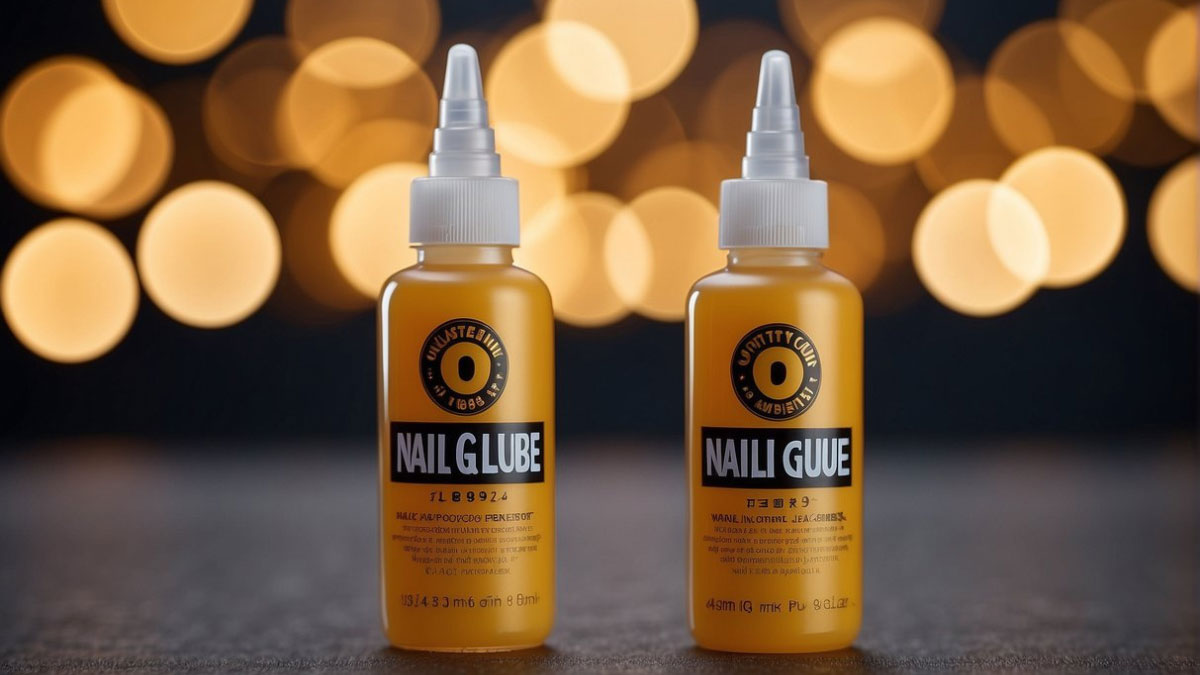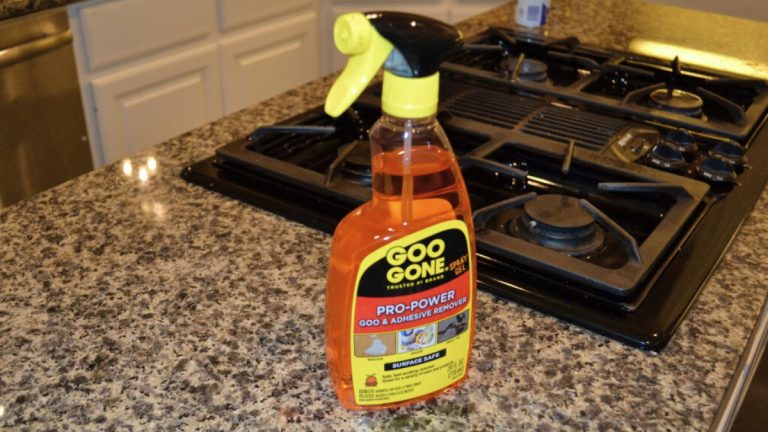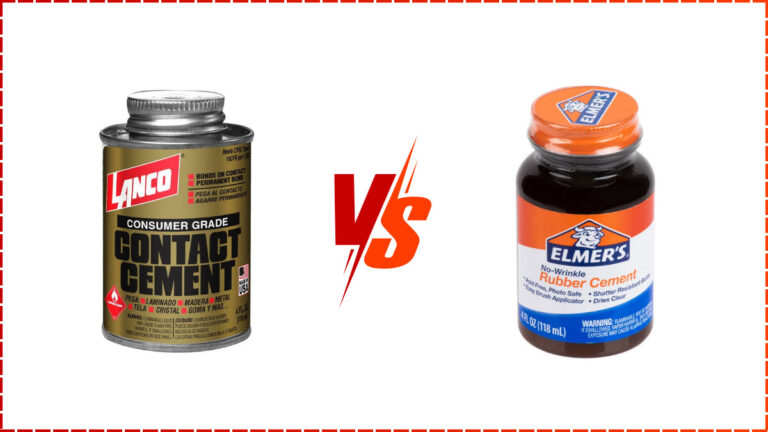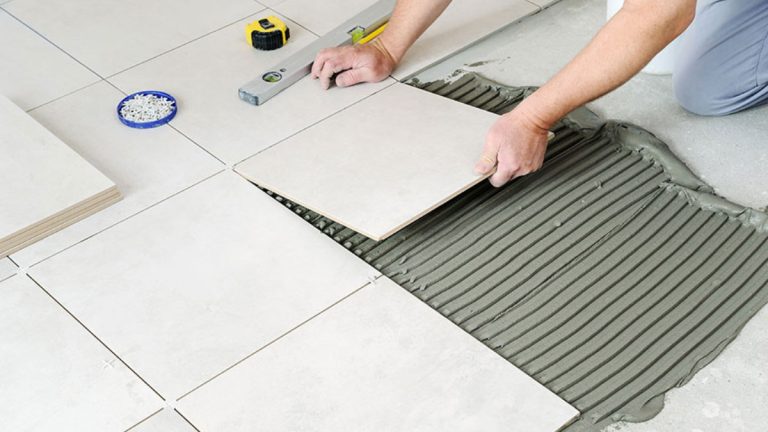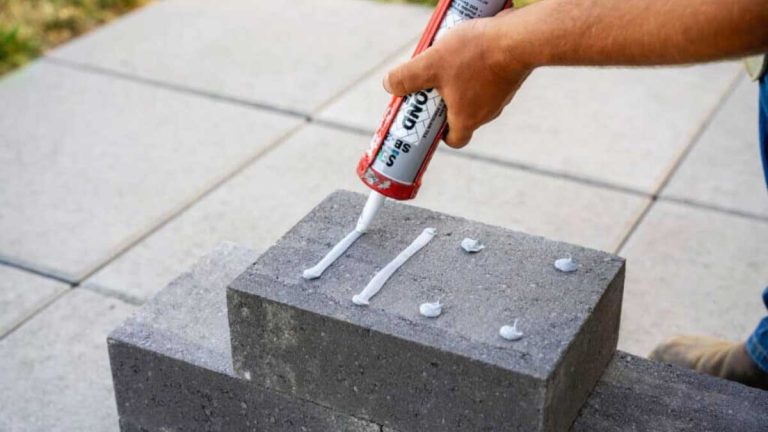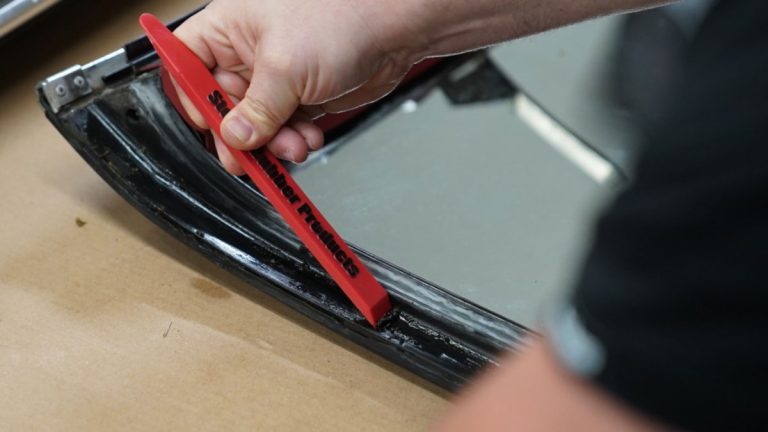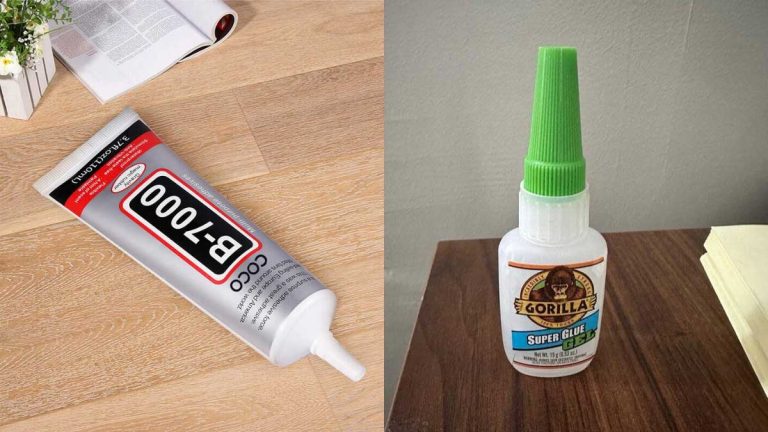Is Nail Glue the Same as Super Glue: Key Differences Explained
Ever found yourself in a pinch and wondered if you could swap nail glue for super glue? You’re not alone. Many people assume these adhesives are interchangeable due to their similar appearance and bonding strength. But, there’s more to the story than meets the eye.
Understanding the differences between nail glue and super glue can save you from potential mishaps and ensure you get the best results for your specific needs. Whether you’re fixing a broken nail or tackling a DIY project, knowing which glue to use is crucial. Let’s jump into what sets these two adhesives apart and why it matters for your next project.
Key Takeaways
- Specialized Formulations: Nail glue and super glue both contain ethyl cyanoacrylate, but nail glue has additional ingredients like methacrylate to enhance flexibility and reduce skin irritation.
- Intended Use: Nail glue is specifically designed for cosmetic applications such as attaching artificial nails and repairing natural nails, while super glue is a general-purpose adhesive for various materials.
- Safety Considerations: Nail glue is formulated to be safer for skin contact, with a lower risk of irritation and burns. In contrast, super glue poses higher risks of skin irritation and is not recommended for use on nails.
- Flexibility and Durability: Nail glue offers some flexibility and is more resistant to breaking, making it more suitable for nail applications. Super glue is more rigid and brittle, suitable mainly for fixed, non-flexible applications.
- Removal Challenges: Super glue is difficult to remove from nails and can cause significant damage, whereas nail glue can be more easily removed with less risk of harming natural nails.
What is Nail Glue?
Nail glue is a specialized adhesive formulated for use in nail care. It securely adheres artificial nails, tips, or other nail enhancements to your natural nails.
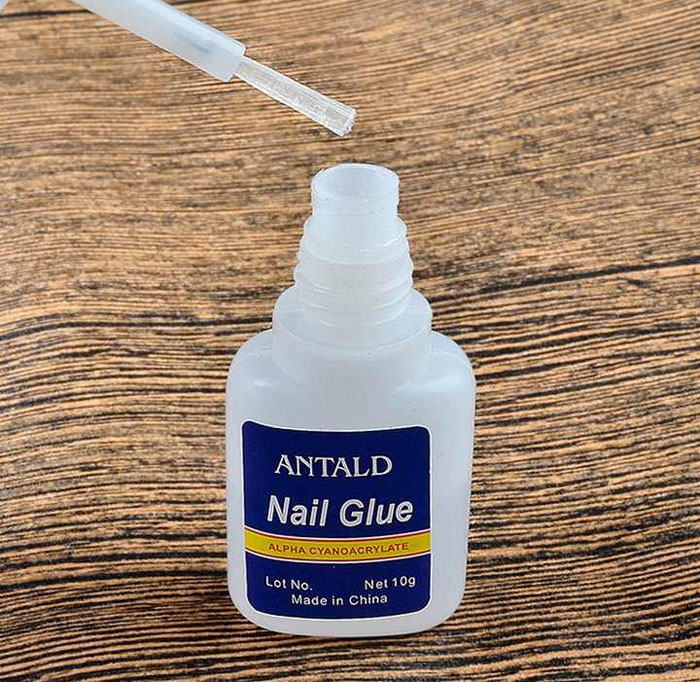
Common Ingredients in Nail Glue
- Ethyl Cyanoacrylate: The primary adhesive component, also found in super glue, providing strong, quick-drying bonds.
- Methacrylate: Enhances flexibility to reduce brittleness.
- Hydroquinone: Stabilizes the formula to extend shelf life.
- Polymethyl Methacrylate (PMMA): Increases durability and reduces the likelihood of breakage.
- Parabens: Acts as preservatives to prevent the growth of harmful bacteria.
Typical Uses for Nail Glue
- Artificial Nail Application: Attaches acrylic or gel nails to your natural nails.
- Nail Tips: Secures nail tips for extensions.
- Nail Art: Adheres decorations, such as gemstones or stickers, for intricate nail designs.
- Nail Repair: Fixes broken or split natural nails.
| Property | Nail Glue | Super Glue |
|---|---|---|
| Primary Use | Nail care and enhancements | Bonding various materials |
| Formulation | Lower cyanoacrylate concentration, includes additives for durability | Higher cyanoacrylate concentration, no skin-safe additives |
| Skin Safety | Lower risk of irritation | Higher risk of causing skin burns |
| Flexibility | Provides some flexibility | Typically rigid and brittle |
Nail glue’s specialized formulation ensures it’s safe and effective for nail care. Understanding these differences helps you choose the right adhesive for your specific needs.
What is Super Glue?
Super glue, also known as cyanoacrylate, is a fast-drying adhesive that bonds quickly and forms a strong connection. It’s widely used for various household and industrial applications, such as repairing broken items and bonding different materials.
Common Ingredients in Super Glue
The primary ingredient in super glue is cyanoacrylate, specifically ethyl cyanoacrylate. This monomer polymerizes rapidly when exposed to moisture in the air, leading to a strong bond formation. If you examine super glue closely, you might notice other stabilizers and thickeners to enhance performance.
Key Ingredients:
- Ethyl Cyanoacrylate: Main component responsible for fast bonding.
- Stabilizers: Prevent premature polymerization.
- Thickeners: Aid in controlling viscosity.
Typical Uses for Super Glue
Super glue serves multiple purposes across different settings. From household repairs to industrial applications, its versatility is unmatched.
Typical Uses:
- Household Repairs: Perfect for fixing broken items like toys, ceramics, and plastics.
- Example: Repairing a cracked ceramic vase.
- Industrial Applications: Essential in various industrial settings for bonding diverse materials.
- Example: Assembling components in manufacturing processes.
| Feature | Nail Glue | Super Glue |
|---|---|---|
| Main Ingredient | Ethyl Cyanoacrylate, Methacrylate, Hydroquinone | Ethyl Cyanoacrylate |
| Typical Use | Attaching artificial nails, repairing nails | General Repairs, Industrial Tasks |
| Bond Strength | Moderate | Strong |
| Skin Safety | Safer for skin | Higher risk of skin irritation |
| Flexibility | Offers some flexibility | More rigid |
Understanding the unique characteristics of super glue helps you choose the right adhesive for your specific needs and ensures successful application.
Key Differences Between Nail Glue and Super Glue
Understanding the nuances between nail glue and super glue can help you avoid potential mishaps and choose the best adhesive for your needs.
Chemical Composition
Both nail glue and super glue primarily contain ethyl cyanoacrylate, but their formulations differ to cater to their specific uses.
- Nail Glue:
- Additives: Nail glue includes additives like methacrylate and hydroquinone, which enhance flexibility, durability, and reduce skin irritation.
- Ingredients: Formulated to interact safely with nails and surrounding skin.
- Super Glue:
- Additives: Contains stabilizers and thickeners, like hydroquinone, to speed up drying and improve bonding strength.
- Ingredients: Designed for robust bonding of non-porous materials like plastics, metals and ceramics.
Intended Use and Safety
The intended use and safety profiles of nail glue and super glue are markedly different due to their distinct purposes.
- Nail Glue:
- Cosmetic Use: Specifically formulated for attaching fake nails, securing nail art, and repairing natural nails.
- Flexibility: Less brittle, offering flexibility and easier removal without damaging natural nails.
- Safety: Lower concentration of cyanoacrylate, minimizing skin irritation and making it safer for use on and around nails.
- Super Glue:
- General Use: An all-purpose adhesive for bonding varied materials like plastics, metals, and ceramics.
- Rigidity: More brittle, which makes it unsuitable for things like nails that need some flexibility.
- Safety: Higher risk of skin irritation, not intended for use on human skin or nails.
Comparison Table
| Feature | Nail Glue | Super Glue |
|---|---|---|
| Main Ingredient | Ethyl Cyanoacrylate | Ethyl Cyanoacrylate |
| Additives | Methacrylate, Hydroquinone | Stabilizers, Thickeners (e.g., Hydroquinone) |
| Intended Use | Cosmetic (nails) | General-purpose |
| Flexibility | Yes | No |
| Safety for Skin | Low Irritation | High Irritation |
| Removal | Easy (soak off) | Difficult (risk of damage) |
- For Nails: Use nail glue to ensure safety and effectiveness when attaching artificial nails or repairing broken ones.
- For General Repairs: Use super glue for non-cosmetic fixes, ensuring items stay bonded securely.
By understanding these differences, you can make informed decisions, ensuring better results and minimizing risks.
Potential Risks of Using Super Glue on Nails
Effects on Natural Nails
Super glue can cause various issues when applied to natural nails, mainly due to its composition and properties.
- Damage and Hardening: Super glue excessively hardens the nail, making it brittle and prone to breaking. This rigidity damages the delicate nail bed and surrounding tissues.
- Chemical Burns and Irritation: The reactive chemicals in super glue can cause severe burns and irritation upon contact with your skin, including the nail bed and cuticles. This results in pain, discomfort, and potential long-term skin damage.
- Removal Issues: Removing super glue from natural nails is extremely difficult. The adhesive’s strong bonding properties make it almost impossible to remove without causing damage to the nail.
Effects on Fake Nails
Applying super glue to fake nails also presents risks and challenges.
- Incompatibility with Materials: Super glue may react adversely with the materials used in fake nails, weakening the bond or even causing the fake nail to dissolve or warp.
- Adhesive Residue: Super glue leaves a sticky residue that’s hard to clean, complicating future nail applications or changes.
- Inefficiency: Although super glue bonds quickly, it doesn’t provide the flexibility and endurance needed for fake nails, leading to frequent reapplications and potential damage.
| Risk | Natural Nails | Fake Nails |
|---|---|---|
| Damage | Hardening and brittleness | Material incompatibility |
| Chemical Burns and Irritation | Severe burns and long-term skin damage | Not applicable |
| Removal Issues | Extremely difficult to remove | Adhesive residue |
| Durability | Brittle nails prone to breaking | Frequent reapplications needed |
Using nail-specific adhesives is imperative for better outcomes and minimal risks, ensuring your nail health and appearance are maintained optimally.
Safe Practices for Nail Care
Adopting safe practices for nail care ensures healthy and strong nails, whether you’re using nail glue or maintaining natural nails. Understand key steps to keep your nails in top condition and avoid common pitfalls.
Choosing the Right Adhesive
Picking the correct adhesive is crucial for nail health. Here’s what to consider:
- Formulation: Nail glue’s formulation includes additives to improve flexibility and reduce skin irritation. In contrast, super glue’s harsh chemicals can cause burns and allergic reactions.
- Durability: Nail glue maintains its bond in moist environments, while super glue may weaken when exposed to water.
- Safety: Nail glue is designed for cosmetic use, making it safer for skin and nails. Super glue, unsuitable for skin, presents higher risks of irritation and chemical burns.
Tips for Nail Recovery
If you encounter nail damage, follow these tips for effective recovery:
- Avoid Harsh Chemicals: Limit exposure to strong chemicals and cleaning agents. Instead, use gloves during household chores.
- Moisturize Regularly: Keep your cuticles and nails hydrated using cuticle oil or hand cream.
- Gentle Removal: When removing nail glue, soak your nails in warm, soapy water, then gently peel off the glue to prevent damage.
- Nail Strengtheners: Apply fortifying treatments to rebuild nails. Products with keratin or biotin can improve strength and growth.
| Aspect | Nail Glue | Super Glue |
|---|---|---|
| Primary Use | Cosmetic purposes | General household/industrial repairs |
| Main Ingredient | Ethyl cyanoacrylate | Ethyl cyanoacrylate |
| Additives | Flexible, moisture-resistant components | Stabilizers, thickeners |
| Safety | Safe for skin and nails | Can cause skin irritation, burns |
| Durability | Long-lasting, even in moist environments | Less durable, breaks down in water |
Use this information to make informed choices and maintain your nail health. Your nails deserve the best care.
Conclusion
Understanding the differences between nail glue and super glue is crucial for achieving the best results and maintaining your nail health. Nail glue, with its specialized formulation, is designed for cosmetic use, ensuring safety and flexibility for your nails. Super glue, on the other hand, is a robust adhesive intended for various household and industrial applications, but it poses higher risks when used on nails.
Choosing the right adhesive for your specific needs can prevent mishaps and promote better outcomes. Always opt for nail glue for nail-related tasks to ensure safety and effectiveness, and reserve super glue for general repairs. By making informed decisions, you can enjoy optimal nail health and achieve your desired results with confidence.
Frequently Asked Questions
Can I use super glue instead of nail glue on my nails?
No, you should not use super glue on your nails. Super glue contains chemicals that can cause skin irritation, damage natural and fake nails, and is not designed for cosmetic use. Nail glue is formulated specifically for nails and is safer.
What are the main differences between nail glue and super glue?
Nail glue is formulated with ingredients like ethyl cyanoacrylate, methacrylate, and hydroquinone, making it safer for nails and providing flexibility. Super glue, primarily made of ethyl cyanoacrylate, is more rigid and can irritate the skin.
Can using super glue on nails cause damage?
Yes, using super glue on nails can cause damage, such as brittleness, breakage, chemical burns, and skin irritation. It is difficult to remove and can result in additional nail damage during the removal process.
Is nail glue safer for skin than super glue?
Yes, nail glue is safer for skin than super glue. Nail glue is formulated to be used on nails and contains ingredients designed to reduce skin irritation and enhance flexibility, making it suitable for cosmetic use.
What should I do if I accidentally use super glue on my nails?
If you accidentally use super glue on your nails, soak the affected area in warm soapy water to soften the glue. Gently try to remove it without pulling or damaging your nails. Consult a healthcare professional if irritation or damage occurs.
Can I use nail glue for household repairs?
Nail glue is not recommended for household repairs. It is designed specifically for nail applications, while super glue is formulated for various household and industrial purposes, providing a stronger bond for different materials.
What are the typical uses of nail glue?
Typical uses of nail glue include attaching artificial nails, securing nail tips, adhering nail art, and repairing broken nails. It is formulated to provide a safe and effective bond for these cosmetic applications.
What type of glue do nail salons use?
Nail salons typically use a professional-grade nail glue formulated with ethyl cyanoacrylate and other safe ingredients for nails. They may also use cyanoacrylate adhesives similar to super glue but formulated specifically for nail applications.
Are there any risks associated with using nail glue?
While nail glue is formulated to be safer for nails, improper use can still cause damage. Always follow the product instructions, avoid excessive use, and ensure proper removal techniques to minimize the risk of nail damage and irritation.
What are some tips for nail recovery after using adhesive products?
To promote nail recovery, avoid harsh chemicals, moisturize regularly, gently remove nail glue, and use nail strengtheners. This helps maintain healthy and strong nails and supports recovery and growth.

